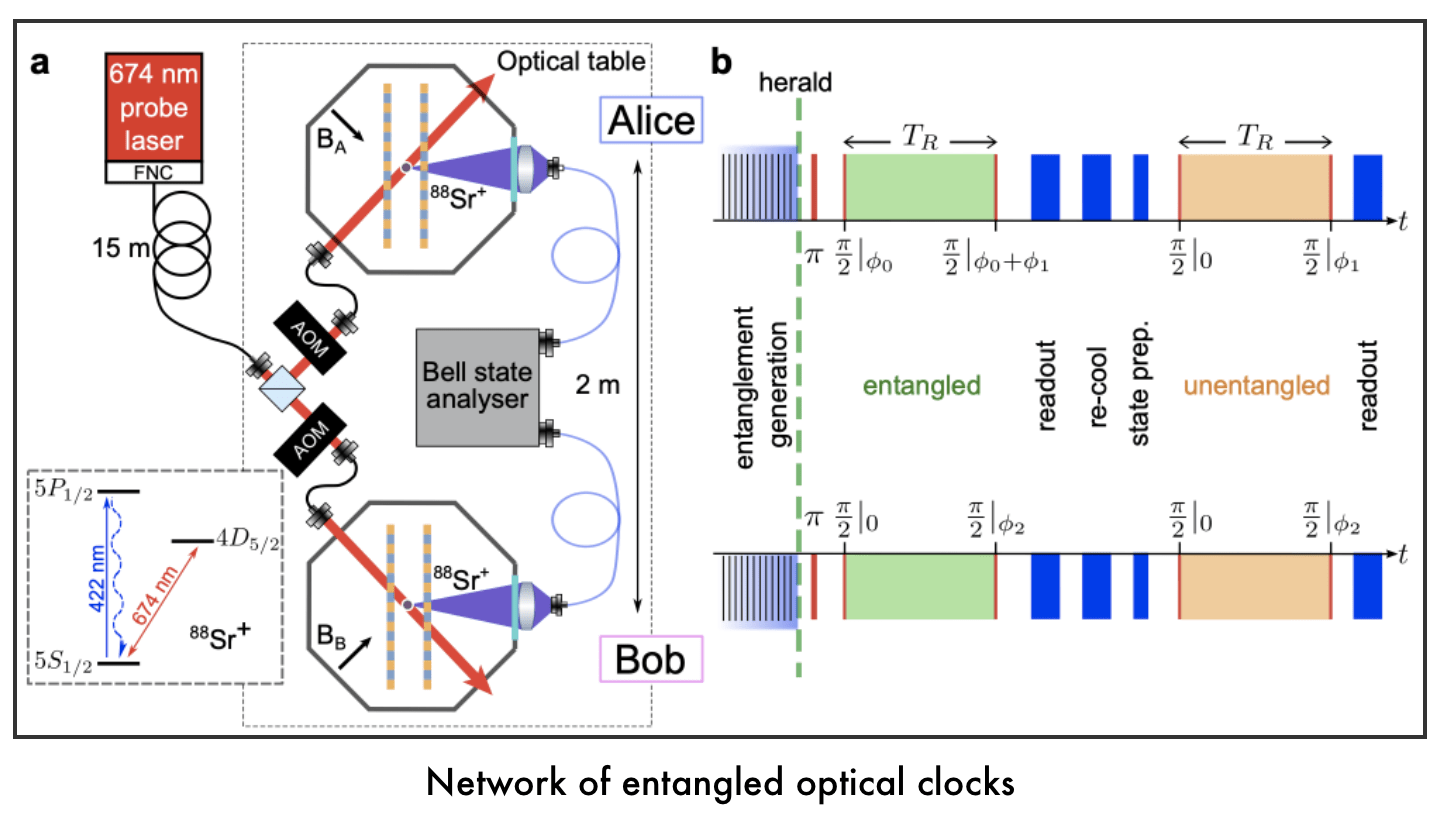Researchers at the University of Oxford have achieved the quantum entanglement of two strontium-based optical clocks. While previous entanglement demonstrations were limited to microscopic distances, this one appears to be the first reported case of macroscopic entanglement. Simply put, quantum entanglement is a phenomenon that enables two physically-distant entities (generally, subatomic particles) to be linked, and in a manner such that changes induced in one entity affect the other. Einstein called this phenomenon ‘spooky action at a distance.’
The particular experiment was conducted through two atomic clocks positioned two meters apart. A photonic link involving laser-driven photon generation, and subsequent transmission through optical fibers to a Bell State analyzer was used to manipulate the quantum states to achieve entanglement. Overall, the experiment demonstrated how the measurement precision of the clocks could be tuned due to their entanglement. See the below image for details.
Source: A quantum network of entangled optical atomic clocks

This breakthrough, though still very nascent, can lead to a better understanding of complex phenomena, such as dark matter or gravity. The next possible steps may include conducting experiments by extending the dual-node clock network to multi-nodes, especially with a longer distance between each pair of nodes.
Moreover, in recent years, the concept of a ‘quantum internet’ is also being discussed. The idea is to build a communication network of quantum devices that exchange information at significantly higher levels of speed, size and reliability vis-a-vis classical networks. Practical advances in quantum entangement, even if limited, may lead to enormous breakthroughs, the nature of which may not be entirely comprehensible today.
Read the original research paper on the optical clock experiment here.